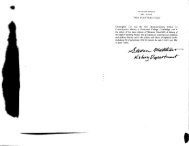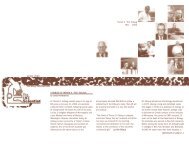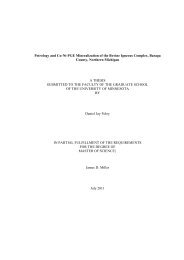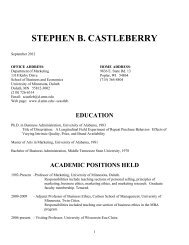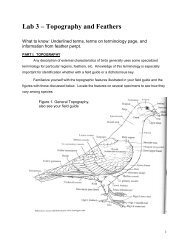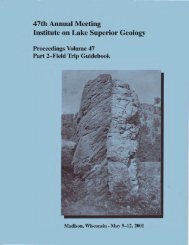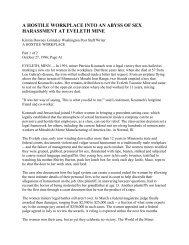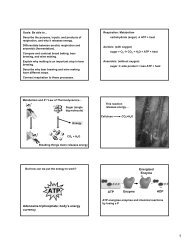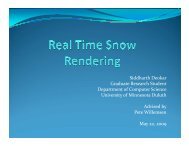Program, Abstracts, and Guidebooks - University of Minnesota Duluth
Program, Abstracts, and Guidebooks - University of Minnesota Duluth
Program, Abstracts, and Guidebooks - University of Minnesota Duluth
Create successful ePaper yourself
Turn your PDF publications into a flip-book with our unique Google optimized e-Paper software.
-35-<br />
STRUCTURAL AN!) METAMORPHIC HISTORY<br />
OF ThE MARQUETTE SYNCLINORIUM<br />
DR.<br />
C. McA. POWELL<br />
<strong>University</strong> <strong>of</strong> Cincinnati<br />
ABSTRACT<br />
The Menominee Group <strong>of</strong> the early Proterozoic Marquette Synclinorium<br />
is composed <strong>of</strong> three formattons: the Ajibik Quartzite grades conformably<br />
upwards into the Siamo Slate which by stratigraphic transition <strong>and</strong> inter—<br />
digitation passes into the overlying Negaunee Iron Formation. Structural<br />
analysis <strong>of</strong> the Siamo Slate reveals two periods <strong>of</strong> deformation. The<br />
first deformation, was the more intense, <strong>and</strong> produced the main east—<br />
west folds, <strong>and</strong> was accompanied by development <strong>of</strong> a quasi—vertical slaty<br />
cleavage. Tabular s<strong>and</strong>stone dykes <strong>and</strong> thin pelitic foliae intruded<br />
parallel to the cleavage during deformation indicate that the cleavage<br />
formed when the sediments were only partially lithified. Fb deformation<br />
continued after cleavage formation, <strong>and</strong> rotation <strong>of</strong> the more competent<br />
psainmitic beds accompanied by plastic deformation in the interbedded<br />
pelitic layers produced refraction <strong>of</strong> cleavage. Little or no heat<br />
accompanied the F1deformation.<br />
Subsequent to Fb the Marquette Synclinorium was affected by thermal<br />
metamorphism <strong>of</strong> regional extent. Isograds centered on a sillimanite—<br />
grade node near Republic cut obliquely across the Ft structures. Relict<br />
diagenetic textures <strong>and</strong> structures including overgrowths on rounded<br />
quartz grains are preserved in all metamorphic facies as high as the<br />
staurolite facies near the western end <strong>of</strong> the Marquette Synclinorium.<br />
In the lower metamorphic grades, the b<strong>and</strong>ing produced by intrusive<br />
pelitic cleavage foliae is accentuated owing to reconstitution <strong>of</strong> the<br />
intrafolial phyllosilicates <strong>and</strong> migration <strong>of</strong> silica into the interfolial<br />
lenses. At higher grades crystallization <strong>of</strong> more r<strong>and</strong>omly oriented<br />
phyllosilicates has reduced the microscopic b<strong>and</strong>ing, <strong>and</strong> many <strong>of</strong> the<br />
large, overgrown, detrital quartz grains have polygonized into smaller<br />
equidimensional grains. The regional metamorphism involved thermal<br />
recrystallization only, <strong>and</strong> did not produce preferred dimensional<br />
orientation <strong>of</strong> quartz.<br />
A weak deformation, I after the climax <strong>of</strong> the thermal metamorphism<br />
produced a steeply plunging, crenulation lineation, La, <strong>and</strong> a few open<br />
angular folds. Pennine chlorite was developed later in many <strong>of</strong> the<br />
rocks during widespread retrogressive metamorphism.




